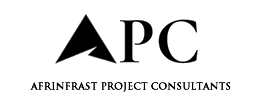
From design models to approvals and correspondence, construction projects generate vast amounts of information. Managing that data effectively is now
a competitive differentiator
Matt Cox, SVP international sales at Newforma, explains how strong information practices help firms improve collaboration, cut risk, and deliver projects with greater confidence.
Matt, thank you for joining us. To start, why is project information and data management becoming such a priority in today’s construction and engineering environment?
Matt Cox (MC): Thanks for having me. Projects today are larger, more complex, and teams are often based in different places. Designers might be in one city, contractors on another site and consultants working from other locations and time zones.
All of them need to make decisions based on the same models and documents.
The challenge is that Project Information Management (PIM) is often fragmented – buried in email inboxes, sitting on someone’s desktop or scattered across different systems. When people can’t find or trust the information they need, collaboration suffers.
Effective data management is about making sure project information is organised, traceable and accessible to the right people at the right time, with the right level of control. And that’s what keeps projects moving.
Collaboration is a word everyone uses, but it can mean different things. What does meaningful collaboration look like to you?
MC: For me, collaboration is about confidence. If you’re not sure whether you’ve got the current version of a model or document, or whether an approval has been issued, then you’re not really collaborating – you’re second-guessing.
I’ve seen teams waste hours chasing information through email chains, or worse, circulating controlled documents by email, which is non-compliant under most information management protocols. That’s not just inefficient; it introduces risk.
When information is properly managed and accessible – with role-based permissions and retention policies – people know they’re working with approved content. With that confidence, you can focus on solving problems together rather than chasing paperwork. It also means site teams, office staff and external partners all have access to what they need, without exposing sensitive information unnecessarily.
You mentioned risk. How does better project information management reduce risk for firms?
MC: Most disputes, delays or compliance issues come down to gaps in information. Who approved this? When was that change made? Was the requirement ever issued in writing? If you can’t answer those questions quickly, you’re exposed.
Strong information management means you have a clear record of what happened – decisions, approvals, correspondence – and you can produce it when needed. That audit trail significantly reduces the risk of conflict, though it doesn’t eliminate it entirely. In many cases, contracts must specify the system of record for the audit trail to carry formal weight.
There’s also a compliance dimension. Clients and regulators increasingly expect firms to manage information to defined standards. In the UK, ISO 19650 is widely adopted, especially in the public sector and tier-one supply chains. Aligning with these expectations isn’t just about avoiding penalties; it’s about building trust. A client who knows you can demonstrate compliance will have more confidence in your ability to deliver.
Some firms might still see compliance as a burden. How do you frame it differently?
MC: I’d say compliance is like insurance: you may notice the cost up front but you’re grateful for the protection when things go wrong. The reality is, if you’ve ever been through an audit or dispute, you know how painful it can be without good records. I’ve spoken with firms that used to spend weeks assembling evidence for an audit. Now they can do it in hours.
So, while compliance requires some effort, it pays for itself many times over. More than that, it’s a differentiator. Clients are now asking about information management maturity in bids. If you can demonstrate you’ve got structured, transparent processes aligned to things like Exchange Information Requirements (EIRs) and information delivery milestones, you’re not just compliant – you’re more competitive.
Let’s talk about efficiency. How does Project Information Management (PIM) support both sales and delivery?
MC: A huge part of efficiency is reuse. In sales and pre-construction, teams often spend far too much time recreating responses to PQQs, RFIs/TQs, method statements or pulling together past project deliverables. If that information is well managed and searchable, you don’t have to reinvent the wheel each time. That can save weeks of effort across a year, freeing teams to focus on tailoring the message rather than rebuilding content from scratch.
On the delivery side, it’s about removing friction. Managing project communications, approvals and information exchanges via a Common Data Environment or structured system prevents bottlenecks and reduces rework. Managers can see progress in real time, spot issues earlier and make proactive decisions.
Efficiency here isn’t about cutting corners; it’s about letting skilled people spend their time on high-value work like design, problem solving and client engagement, instead of chasing emails or duplicating effort.
For firms just starting to rethink how they handle project information, what’s your advice?
MC: Start small and be practical. You don’t need to digitise everything overnight. Look at where your pain points are. Maybe your teams struggle with version control of models, maybe it’s approvals or maybe it’s tracking correspondence. Solve the biggest issue first then build from there.
I’d also say don’t underestimate the cultural element. Technology alone doesn’t fix bad habits. People need to see the value of good information practices – that it saves them time, reduces stress and improves outcomes. Once they experience that, adoption becomes much easier.
Finally, what’s one message you’d like to leave readers with?
MC: I’d say this: information is the lifeblood of every project, from design through to operations. We all know how damaging it is when information is missing, wrong or delayed. By making information management a priority, firms are really investing in resilience.
In a sector that’s under constant pressure to deliver more with less, that resilience is what separates the firms that thrive from the ones that struggle.
Resilient delivery and competitive advantage both start with how you manage your project information. Newforma gives firms the tools to turn data into confidence, clarity and lasting value. Learn more at www.newforma.com.
*Please note that this is a commercial profile.
The post Resilient delivery starts with better Project Information Management appeared first on Planning, Building & Construction Today.

